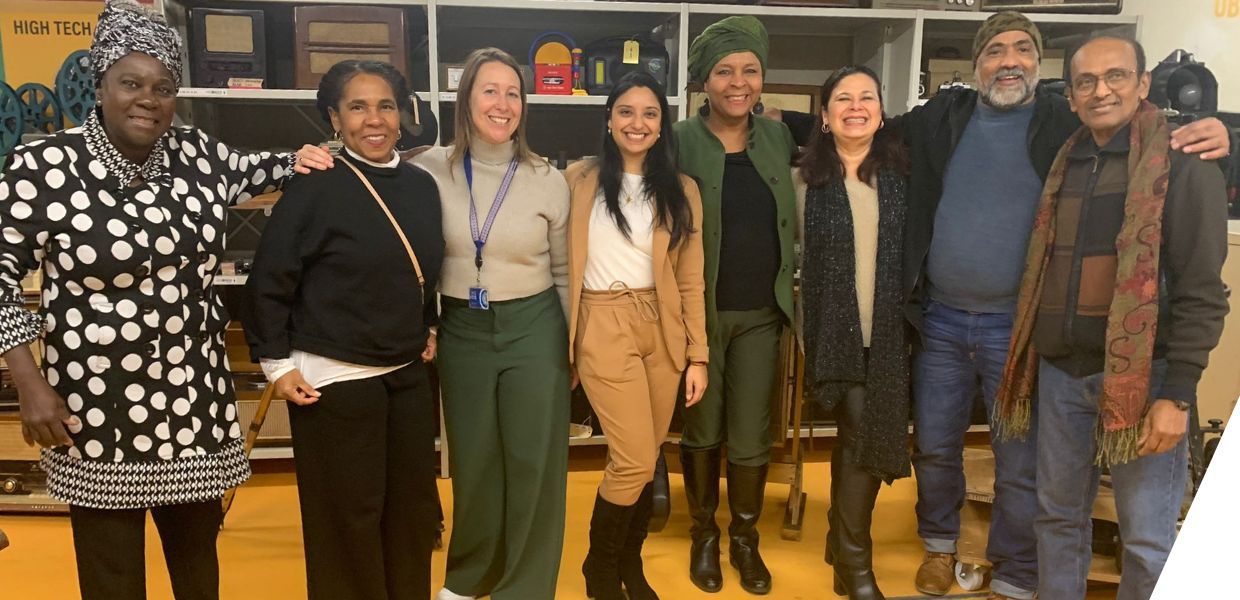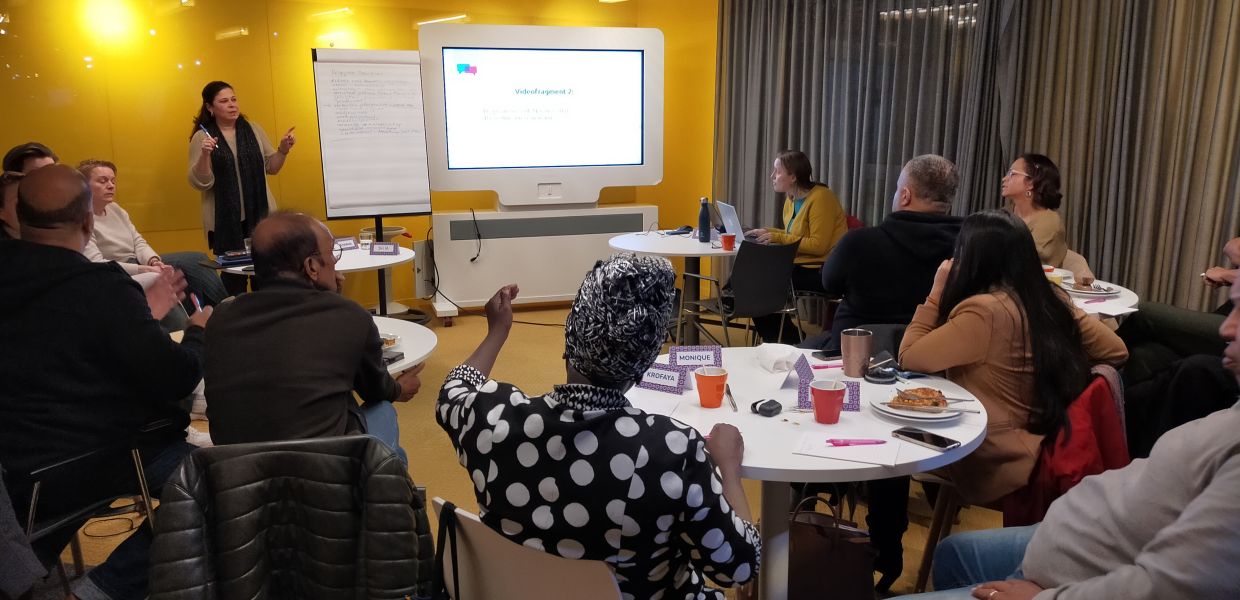The DE-BIAS project aims to promote a more inclusive and respectful approach to the description of digital collections and the telling of stories and histories of minoritised communities. As part of the project’s work, in November 2023 and January 2024, the Netherlands Institute for Sound & Vision (NISV) organised three co-creation sessions in which 10 participants from the Dutch-Surinamese community reviewed NISV archival descriptions to uncover and correct biased language. Here, we share our key takeaways and learnings on community collaboration.
1. Community allies are vital
Firstly, we learnt that having a trusted ‘community ally’ is central to all community collaboration. Our community ally Sharma Soerjoesing-Chin A Foeng facilitated the co-creation sessions, and as a community member herself mediated between the community and the archive. Sharma is from Suriname and has worked as a presenter and producer at the Dutch broadcaster Omroep West since 2003.
Sharma’s connection with the community and professional expertise was instrumental in forming the group, selecting the material and guiding our approach. She helped narrow down the vast amount of available material to a selection of 20 clips, including historical news, satirical programmes, advertisements, children’s shows and travel documentaries related to Suriname. Her involvement ensured a warm and safe space for discussions and critical reflection, in which the group could take the lead.
2. Diversify and compensate the group
Secondly, diversity among participants was essential. Our participants varied in age and were from different Surinamese cultural backgrounds such as Chinese, Hindustani, Creole and Javanese Surinamese, with different migration experiences. Some were born in the Netherlands while others migrated when they were young, or had only recently arrived. This variety of cultural positionalities ensured a diversity of perspectives, enriching the discussions.
Furthermore, it was important to pay participants, in acknowledgement of the expertise community members bring. Sharma specifically invited individuals whose work or daily lives involve raising awareness of Surinamese culture in the Netherlands. As such, the participants possessed expert knowledge of Surinamese culture and history which was invaluable to the sessions.
3. Emotions first
Next, leaving room for emotions proved vital. In describing material, archival institutions such as NISV try to be as neutral as possible, while accepting that neither the material nor the description can ever be completely neutral. Since images evoke many emotions, according to Sharma, discussing emotion and recognition was the most natural starting point. After watching a clip, Sharma would first write all the emotions that occurred to the group on a flipchart, before collecting factual information from them to formulate a description.
In taking this approach and welcoming emotion, the archive was made personal and almost familial. As Sharma recounts, the sessions, ‘Felt a bit like we were at a traditional Surinamese party at times, watching a movie with grandma and grandpa, the aunties and the cousins, and everyone sharing their stories!’



